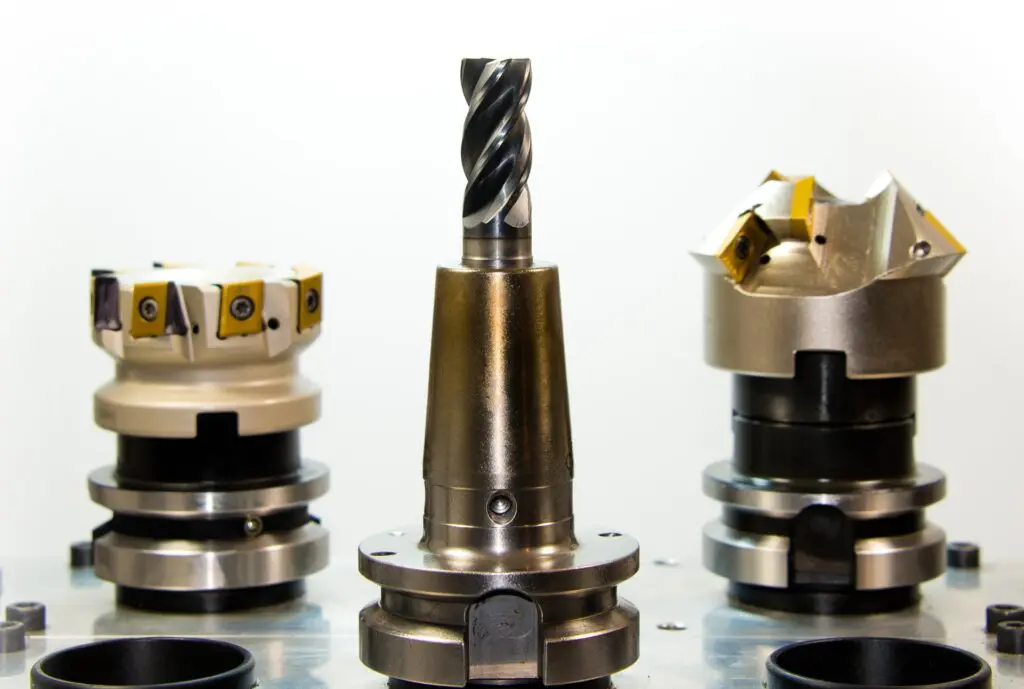Inventory management is the backbone of any product-based business. It’s the process of tracking stock levels, managing orders, and ensuring that you have the right products in the right place at the right time. Efficient inventory management is not just about avoiding chaos in your stockroom; it’s a critical factor in your business’s profitability and success. Time is of the essence in this process. Every minute spent on inefficient inventory tasks is a minute and a dollar lost.
Think about it: time saved in inventory management directly translates to reduced operating costs. Less time spent manually counting stock or chasing down misplaced items means your team can focus on more strategic tasks like sales, customer service, and business growth. Increased efficiency is another significant benefit. Faster order fulfillment, quicker stock replenishment, and smoother overall operations contribute to a more agile and responsive business.
On the flip side, inefficient, time-consuming inventory management can be a real drag on your business. It can lead to stockouts, resulting in lost sales and frustrated customers. Overstocking ties up valuable capital and warehouse space. Errors in inventory data can lead to inaccurate orders and wasted resources. In short, if your inventory management is slow and cumbersome, it’s likely costing you money and hindering your potential.
Time-Consuming Challenges in Inventory Management
Several common inventory management activities can become significant time sinks if not handled effectively. Let’s dive into some of the most frequent challenges that eat up valuable time:
One major culprit is manual tracking and human errors. Relying on spreadsheets and manual counts is incredibly time-consuming and prone to mistakes. Data entry errors, miscalculations, and lost paperwork can all throw your inventory counts off and create a domino effect of problems.
Another significant challenge is the lack of real-time data and visibility. If you don’t have an up-to-the-minute view of your inventory levels, you’re essentially operating in the dark. This lack of visibility makes it difficult to make informed decisions about ordering, restocking, and fulfilling customer demands, leading to delays and inefficiencies.
Stockouts and overstock issues are often symptoms of poor time management in inventory. Without efficient systems, you may find yourself scrambling to replenish stock at the last minute (stockouts) or burdened with excess inventory taking up valuable space and capital (overstock). Both situations are time-consuming to resolve and can negatively impact your bottom line.
An inefficient warehouse layout can also dramatically increase the time spent on inventory tasks. If your warehouse is disorganized, items are hard to find, and picking routes are convoluted, your team will waste countless hours searching for products and fulfilling orders.
Finally, poor supply chain coordination can add unnecessary delays to your inventory process. Lack of communication with suppliers, inaccurate lead time estimations, and uncoordinated deliveries can all disrupt your inventory flow and force you to spend extra time resolving issues.
Key Strategies to Streamline Inventory Management and Save Time
The good news is that most of these time-consuming challenges can be addressed through optimization. Streamlining your inventory management processes is the key to reclaiming lost time and boosting efficiency. To achieve significant time savings, you need to focus on strategic improvements across several key areas of your inventory operations. These areas include automation, warehouse optimization, technology implementation, data utilization, process streamlining, and team empowerment. Let’s explore each of these strategies in detail.
1. Automate Inventory Management with Dedicated Software
One of the most impactful ways to save time in inventory management is through automation using dedicated software. Inventory management software is designed to automate many of the manual tasks that traditionally consume hours of your team’s time.
The benefits of automation are clear: it significantly reduces manual work. Imagine eliminating manual data entry, spreadsheets, and endless physical stock counts. Software handles these tasks automatically, freeing up your staff for more valuable activities. Automation also dramatically increases data accuracy. By minimizing human input, you reduce the risk of errors, ensuring your inventory data is reliable and up-to-date.
When choosing inventory management software, look for key features such as:
- Inventory tracking: Real-time visibility of stock levels across all locations.
- Order management: Streamlined order processing, from placement to fulfillment.
- Reporting and analytics: Tools to monitor key metrics and identify trends.
- Integration capabilities: Ability to connect with other business systems like accounting and e-commerce platforms.
The right software for your business will depend on your size and specific needs. For small businesses, a basic inventory management system might suffice. Larger enterprises may require more comprehensive solutions, possibly integrated within an ERP (Enterprise Resource Planning) system or a WMS (Warehouse Management System). Investing in the right software is a crucial step towards automating and significantly speeding up your inventory management.
2. Optimize Warehouse Layout and Organization
The physical layout of your warehouse has a direct impact on efficiency and operational times. A well-organized warehouse minimizes wasted movement and ensures your team can quickly locate and access items. Improving your warehouse layout is a significant time-saving strategy.
Start by improving stock visibility and accessibility. This can be achieved through a logical layout based on product type, turnover rate, or size. Clearly labeling shelves, bins, and aisles is also essential for quick identification and navigation.
Implement a systematic storage system. ABC analysis is a valuable technique here, categorizing inventory based on value and turnover. “A” items (high value, high turnover) should be placed in easily accessible locations, while “C” items (low value, low turnover) can be stored in less prime areas. FIFO (First-In, First-Out) is another important method, ensuring that older stock is used before newer stock, particularly crucial for perishable goods but beneficial for general inventory rotation as well.
Don’t forget to leverage vertical space. Installing shelving systems and racking allows you to maximize your storage capacity within the same footprint, making more items accessible and reducing the need to search through cluttered floor space. An optimized warehouse layout translates directly to faster picking times, reduced errors, and overall time savings in your inventory operations.
3. Implement Barcode and RFID Technology
Barcode and RFID (Radio-Frequency Identification) technologies are game-changers when it comes to saving time in inventory management. These technologies automate data entry and tracking, significantly speeding up various inventory processes.
Barcodes and RFID automate data entry and tracking. Instead of manually writing down product information or scanning serial numbers, you can simply scan a barcode or RFID tag. This drastically reduces the time spent on data entry and makes tracking items throughout your warehouse much faster.
These technologies also improve accuracy and efficiency by reducing errors. Manual data entry is prone to mistakes, which can lead to inventory discrepancies and wasted time correcting errors. Barcode and RFID scanning are far more accurate, minimizing errors and ensuring data integrity.
Furthermore, barcode and RFID enable the use of mobile scanning devices. Equipping your team with handheld scanners allows them to perform inventory tasks like receiving, picking, and stocktaking directly on the warehouse floor, with real-time updates to your inventory system. This portability and real-time data capture significantly speed up inventory operations and improve efficiency.
4. Leverage Data and Analytics for Demand Forecasting and Stock Optimization
Demand forecasting plays a crucial role in optimizing your stock levels and saving time in inventory management. Accurate forecasting helps you anticipate demand, avoid stockouts and overstocks, and streamline your entire inventory flow.
Utilize historical data and trends for predictive analysis. By analyzing past sales data, seasonal trends, and market changes, you can gain valuable insights into future demand patterns. This allows you to make more informed decisions about ordering and stocking levels.
Consider implementing a Just-in-Time (JIT) inventory system. JIT aims to minimize storage costs and waste by receiving inventory only when it’s needed for production or to fulfill customer orders. However, it’s important to mention JIT risks cautiously. While JIT can save time and reduce holding costs, it requires highly accurate demand forecasting and reliable supply chains. Disruptions in either of these areas can lead to stockouts and production delays.
Accurate forecasts enable you to optimize stock levels to avoid overstock and stockouts. By knowing what to expect in terms of demand, you can order the right quantities at the right time, minimizing both excess inventory and the risk of running out of stock.
Finally, utilize real-time reporting and dashboards to monitor key inventory metrics and identify trends. These tools provide a visual overview of your inventory performance, allowing you to quickly spot potential issues, track key performance indicators (KPIs), and make data-driven decisions to optimize your inventory management in real-time.
5. Streamline Receiving and Shipping Processes
Efficient receiving and shipping processes are essential for time savings in inventory management. Bottlenecks in these areas can cause delays throughout your entire supply chain. Streamlining these processes is key to maintaining a smooth and timely inventory flow.
Implement a dock scheduling system to manage inbound and outbound flow. A dock scheduling system helps you coordinate deliveries and shipments, preventing congestion at your loading docks and ensuring a smooth flow of goods in and out of your warehouse.
Optimize packaging and labeling for efficient handling and identification. Using standardized packaging sizes and clear, scannable labels speeds up the receiving and shipping processes. Proper packaging also protects items during transit, reducing damage and the associated time and costs of handling returns or replacements.
Utilize a Transportation Management System (TMS) to optimize shipping routes and costs. A TMS helps you plan and manage your transportation activities more efficiently. It can optimize routes, select the best carriers, and track shipments in real-time, leading to faster delivery times and reduced shipping costs. Streamlined receiving and shipping processes minimize delays, reduce handling time, and contribute significantly to overall time savings in your inventory management.
6. Train and Empower Your Team
While technology and optimized processes are crucial, the human factor is equally important in efficient inventory management. A well-trained and empowered team is essential for implementing and maintaining time-saving strategies.
Provide regular training on best practices in inventory management. Training should cover standardized procedures, the use of new technologies, and best practices for tasks like receiving, picking, packing, and stocktaking. Standardized processes ensure consistency and efficiency across your team.
Empower employees in decision-making for quicker problem-solving. When employees feel empowered to make decisions and resolve issues independently, it speeds up operations and reduces bottlenecks. Empowerment fosters a sense of ownership and accountability within your team.
Promote a culture of continuous improvement. Encourage feedback from your team on inventory processes and actively seek out opportunities for optimization. Regularly review your procedures, analyze performance data, and implement changes to continuously improve efficiency and save time. A well-trained, empowered, and improvement-focused team is your greatest asset in achieving lasting time savings in inventory management.
Essential Tools and Technologies for Time-Saving Inventory Management
To recap, several essential tools and technologies can significantly contribute to time-saving inventory management. These can be broadly categorized as:
- Inventory Management Software: This is the cornerstone of automated inventory management. This category includes:
- WMS (Warehouse Management Systems): For comprehensive warehouse operations management, including inventory control, order fulfillment, and shipping.
- ERP (Enterprise Resource Planning) systems with inventory modules: For integrated business management, often including robust inventory management functionalities.
- Standalone Inventory Management Software: Solutions focused specifically on inventory tracking, order management, and reporting, suitable for businesses of various sizes.
- Barcode and RFID Solutions: For automated data capture and tracking, including:
- Barcode scanners and printers: Cost-effective solutions for item identification and data entry.
- RFID tags and readers: For more advanced tracking, particularly beneficial for high-volume or high-value inventory.
- Demand Forecasting and Planning Tools: To predict demand and optimize stock levels, which may include:
- Statistical forecasting software: Utilizing methods like time series analysis, regression, and moving averages to predict future demand.
- Spreadsheet software with analytical capabilities: For basic demand forecasting and data analysis.
Advanced analytics platforms: For more sophisticated forecasting, incorporating machine learning and AI.
Quick Tips to Save Time in Inventory Management
Here are some immediately actionable, quick tips to start saving time in your inventory management today:
- Conduct regular inventory audits: Don’t wait for major discrepancies to surface. Regular cycle counts and stock audits help identify and correct errors proactively, saving time in the long run.
- Utilize batch processing for stock updates: Instead of updating inventory records one item at a time, group similar tasks together for batch processing. For example, process all received goods or shipped orders in batches to streamline updates.
Improve communication and coordination with suppliers: Clear communication with suppliers regarding order lead times, delivery schedules, and potential delays can prevent disruptions and save time resolving supply chain issues.
Achieving Lasting Time Savings in Inventory Management
Efficient inventory management is not a one-time fix but an ongoing process of optimization and adaptation. The benefits of investing time and resources in streamlining your inventory are substantial and long-lasting. You’ll experience reduced operating costs, increased efficiency, fewer errors, improved customer satisfaction, and a more agile and responsive business overall.
To achieve lasting time savings, remember that continuous improvement is key. Regularly review your processes, embrace new technologies as they become available, and adapt your strategies to the evolving needs of your business and the market. By making time-saving inventory management a priority, you’ll unlock significant efficiencies and set your business up for sustained success.






